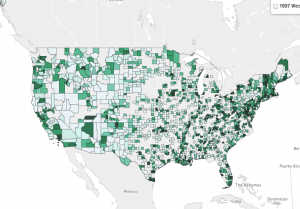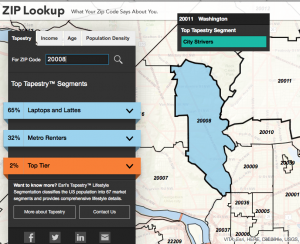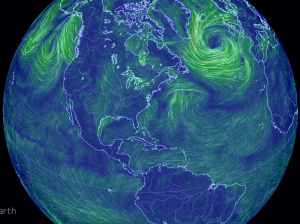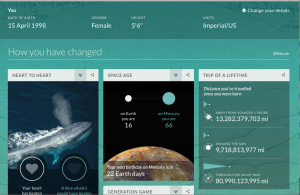For teachers, there is no holiday better positioned during the school year than Thanksgiving. We spend precious summer days flexing and pressing in mental cross-fit training for the coming year. Then the real fitness test begins. With ferocious intellectual muscle, organizational stamina, and some fast-twitch adjustments, we sprint head-down into the first months of the year. By Thanksgiving, we know our students well, are well along the route of the year-long marathon, and have found a good pace. For many of us, Thanksgiving day is the first day off since the first day of school. We give thanks– MANY thanks!

After so many Thanksgivings as a teacher, my basket of things for which I am thankful has grown and deepened. I share a few in honor of all my colleagues who are too tired to talk this Thanksgiving, much less write.
I give thanks…
- For my best bosses, principals, and department supervisors who never said, “No.” Instead, they asked “Why?” or “How?” — the two most important things I should think about as a teacher.
- For my top desk drawer, filled with reminders of student success and my own growth as a teacher: the sticky notes saved, a “special” pencil a student gave me, light bulb note paper, pens and ID lanyards from conferences, leftover invitations to classroom events, teacher gifts, sticker sheets with one remaining smily face, and goofy trinkets I took away from a funny student I actually loved but had to discipline. I really should Google that kid to see where he is now…
- For the teachers who always came to lunch with something positive to talk about.
- For turning off my computer and iPad — and muting my phone. I still like face to face talk best. Especially the laughing part.
- For the gym teacher who shared lunch duty with me every day– and helped me break up the fights every day. We were like a two person theatre act. I am even more grateful that duty lasted only one semester.
- For early dismissals (for snow). Yes, they forced me to completely re-plan lessons, but we are all still kids when it snows– at least the first snow each season. I am less grateful for the drives home in that snow.
- For a mother and father who were both teachers — and a grandfather as well. I would not Think Like a Teacher if it were not for them. My brother says it is in our genes.
- For a scary prof/advisor who made me teach a college Shakespeare class (90 minutes!) about a play he had acted with the Royal Shakespeare Company. After that, no lesson or audience seemed intimidating again.
- For a family that tolerates living with a teacher. They do ask me to turn it off, though, “Does everything have to be a teachable moment?!”
- For watching a niece share about becoming a teacher on Facebook. Her enthusiasm vibrates.
- For people who don’t make fun of my license plate, TCHR2GO.
- For Google. So every wonder can be followed by discovery and critical decisions about whom to believe.
- For writing a blog. So many reasons.
Happy Thanksgiving to all teachers. Enjoy the rest, and add an extra dollop of whipped cream to your pie. You made it through to Thanksgiving!
Comments Off on A Teacher’s Thanksgiving: The deepening basket
Think back to the first time you can remember seeing or using a map. Depending on how old you are, that map may have been the paper-folding challenge type– printed with lines, symbols, and colors — or an app on a smart phone. Maps have always offered a symbolic way to show real places, but the Internet and GPS have added exploration into what “map” means. Today’s techno-mapped world lures us to explore far beyond the dusty map sections of a social studies or geography textbook. Those big paper road atlases with outdated information and tiny print you couldn’t read in the dimly lit back seat have mostly disappeared. The Earth and maps are ALIVE thanks to technology. Where is it? Ask Google Earth or Google Maps. How do I get there? Ask Siri or your in-car GPS. EMaps are so ubiquitous that we may forget how much they have reshaped our students’ concepts of a living “world” compared to what we may have experienced on paper.
 Three maps recently reviewed on TeachersFirst offer three very different “looks” at the world (or U.S.). One, Yale Photogrammar, organizes historic U.S. photographs. In this case, the “map” is actually the portal to see a “world” of the 1930s and 40s. The map itself simply provides clickable “places” of reference for the photographs. It is a visual interface to access visual information. But is that really all? Like most eMaps, this one is zoomable and almost invites you to dive in. You ask whether houses or farms or people were different in Nebraska vs. California? Click to see. What about county to county in Pennsylvania? Click to see. This map is an endless set of windows into lives and times gone by.
Three maps recently reviewed on TeachersFirst offer three very different “looks” at the world (or U.S.). One, Yale Photogrammar, organizes historic U.S. photographs. In this case, the “map” is actually the portal to see a “world” of the 1930s and 40s. The map itself simply provides clickable “places” of reference for the photographs. It is a visual interface to access visual information. But is that really all? Like most eMaps, this one is zoomable and almost invites you to dive in. You ask whether houses or farms or people were different in Nebraska vs. California? Click to see. What about county to county in Pennsylvania? Click to see. This map is an endless set of windows into lives and times gone by.
 Esri’s Zip Lookup uses a map as the entry point into socio-economic groups, organized by mapped zip codes and described in terms of life style and values. See the make up of the people in a zip code. Who lives here? Comfortable Empty Nesters, Parks and Rec, Laptops and Lattes, Metro Renters? The map is a window into what people care about and spend their money on. We are tempted to ask, “Why here? What is it about this location that attracts this group?” The Zip Lookup map is an invitation to take an almost voyeuristic dive into people’s lives, based on where they live.
Esri’s Zip Lookup uses a map as the entry point into socio-economic groups, organized by mapped zip codes and described in terms of life style and values. See the make up of the people in a zip code. Who lives here? Comfortable Empty Nesters, Parks and Rec, Laptops and Lattes, Metro Renters? The map is a window into what people care about and spend their money on. We are tempted to ask, “Why here? What is it about this location that attracts this group?” The Zip Lookup map is an invitation to take an almost voyeuristic dive into people’s lives, based on where they live.
 Earth Null School maps the winds on the Earth’s surface. Unlike the weather maps on TV, this globe is in your hands to turn and zoom, watching beautiful swirls that threaten to spin blizzards or floods. This map ignores humans entirely. It does not matter who lives there or what history happened there. The storms on this map don’t care. But we are drawn in to see the power of what may happen here tomorrow or what is closing the airport in Denver today. The Earth really is alive in this map.
Earth Null School maps the winds on the Earth’s surface. Unlike the weather maps on TV, this globe is in your hands to turn and zoom, watching beautiful swirls that threaten to spin blizzards or floods. This map ignores humans entirely. It does not matter who lives there or what history happened there. The storms on this map don’t care. But we are drawn in to see the power of what may happen here tomorrow or what is closing the airport in Denver today. The Earth really is alive in this map.
If the only maps you have ever seen are eMaps, your view of the world is so much richer. If you teach map skills, share four maps with your students: one the folded paper type, and the other three eMaps listed here. Ask them what each map is GOOD for…what it makes them wonder. If they can answer those questions about each map, they have learned more about map skills than any lesson about keys and tropics. They have discovered the lives within maps.
Comments Off on The Lives of Maps
Every once in awhile, an experience slaps us in the face, screaming. “Take a look at the big picture! Get some perspective!” It may be a reunion, a funeral, or even a web resource. Starting Sunday, TeachersFirst is featuring BBC’s Your Life on Earth, reviewed here. This clever interactive asks for your birthdate and some basic information (gender and height) in order to provide comparisons and measures of your life through the lens of our planet Earth.
For some reason, I decided to try focusing on the lifetime of TeachersFirst, entering that TeachersFirst is female and of “average” height for a teacher (5′ 6″). The results provide several metrics of what has gone on since TeachersFirst was “born” back in April, 1998:
- A house fly your age would have a family of 6,135 generations by now.
Interesting but not terribly meaningful to me. I am glad we have not seen that many generations of students. We teachers sometimes have trouble adjusting to the changes of just half a generation.
- Population has increased by1,268,481,846 since you were born.
That’s a lot of new students for today’s teachers, all aged zero to 16!
- The North American Plate has moved 2’7“ (Actually, this is the measurement of the “seafloor spread in the Gulf of California, pushing the North American Plate in a southeasterly direction.”)
I don’t think TeachersFirst can take any credit for this, though we do try to help teachers shift their thinking about how technology can fit into learning.
- The per capita global food supplies of bananas, apples, and eggs are way up.
It would be nice to think that the students and teachers using TeachersFirst all have enough to eat, but I know they do not.
- The renewable energy supply is up 50%, but 240.8 million acres of forest cover have been lost– in just 16 + years!
So what will today’s kindergarteners see when they are 30?
TeachersFirst’s mission is to provide resources to support teaching and learning across all subjects K-12 and to help teachers envision and implement effective use of technology as a tool for learning. In a broader sense, as teachers we are all trying to empower kids to understand, sustain, and improve the world they live in — and ultimately grow to lead.
I am grateful that people like the BBC occasionally remind Thinking Teachers of our mission. The questions and comparisons that grow out of a different perspective are something every teacher needs. Try entering the start date of your teaching career as a “birthdate” to see what has changed.
Comments Off on Of birth dates and houseflies: Gaining a new teaching perspective




 Earth Null School
Earth Null School


